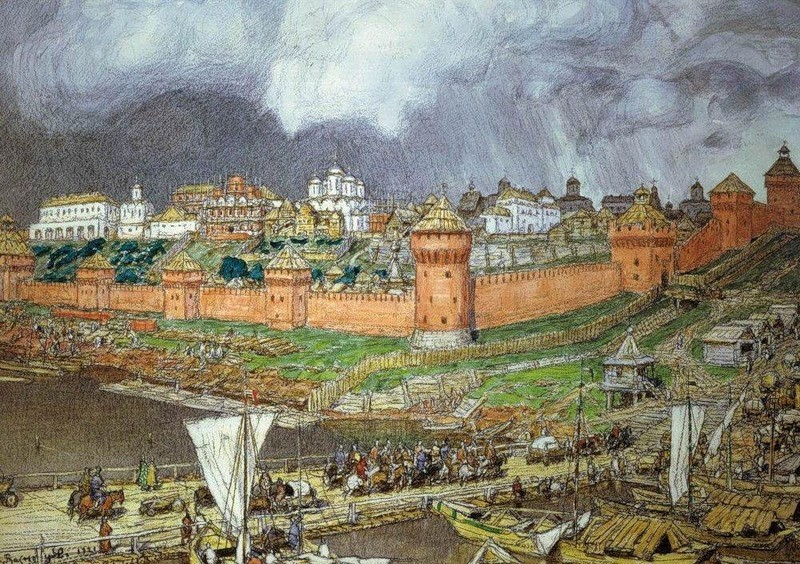Ivan the Great ordered the rebuilding of the Kremlin
The Kremlin, a fortified structure in the very center of Moscow, was renovated by a group of talented Italian architects that Ivan the Great summoned. Ivan the Great ordered the rebuilding of the Kremlin. Ivan made every effort to transform Moscow into a fitting successor to Constantinople, and as part of that effort, he welcomed several foreign craftsmen and masters to Moscow. The most famous of these was the Italian Ridolfo di Fioravante, who constructed several cathedrals and palaces in the Kremlin and oversaw the construction of the Kremlin walls, and was known by the nickname "Aristotle" due to his amazing intelligence. The rehabilitation plan called for the creation of a new Kremlin wall, the reconstruction of a number of towers, the building of a number of churches, and the construction of a new palace.
The Kremlin's limestone walls, which date to the end of the 14th century, were set to require urgent renovation in the 1460s. Patchwork repairs are handled by local contractors, but Ivan III has to travel to Italy to locate a building expert for the more fundamental rebuild. The original stronghold was rebuilt with brick towers and walls between 1485 and 1516. The wall has a thickness range of 3.5 to 9 meters and a unique Italian "tail swallow" hole. Its maximum length is 2,235 meters. The diagram's elements are perfectly proportioned on the limestone façade, and the inside is built with round columns rather than heavy wall restrictions, making it lighter, more plentiful, and longer lasting than any other church in the Moscow region. Smaller churches in classic Russian architecture were also built at this time, including the Church of the Annunciation (1484–1488) and Robe's German Church (1848-1489).
Beginning in the early 1470s, the principal cathedral of Moscow, "Mother Mary rests in peace," underwent extensive reconstruction thanks to the assistance of Metropolitan Philip, the leader of the Russian Orthodox church, and the magnificent Prince Ivan III. When a section of the wall crumbled and the local builders were unable to complete such a vast and challenging project, Ivan requested assistance from Italian engineer and architect Aristotle Fioravanti, who traveled to Moscow in 1475. He was given the task of simulating the Cathedral's construction. While the architect's design includes many elements of the Russian-Byzantine style (particularly the enormous cupon roof in the center and smaller cupon roofs at the corners), he also makes a number of innovations. Strong oak pillars serve as the base, an iron pull holds up the dome, and strong bricks rather than stones are used to construct the dome and the walls that surround the cupola top.
Compared to many of Russia's old towns, Moscow is a relatively modern metropolis, having been constructed about 1147, yet it evolved through a harsh circumstance movement that led to the conquest of Russia. An approximate river triangle may be seen on the Kremlin, a stronghold in the middle of the city. Up until Peter the Great transferred the capital to St. Petersburg in the year 1711, the Kremlin served as a significant location in the Duchy of Muscovite and afterward in Russia generally. It also housed several local cathedrals. The royal court makes use of several significant administrative structures, monasteries, and smaller churches within the Kremlin. Due in large part to its iconic look in Russian culture, particularly after local architects added a spiral to the tower in the 17th century, the Kremlin wall came to represent Russian authority. The main wall and wall are strikingly reminiscent of Quattrocento Italian fortifications, which were far out of date in Italy at the time the Kremlin in Moscow was being built.











